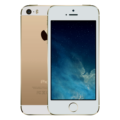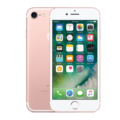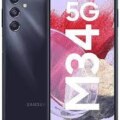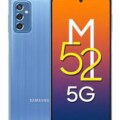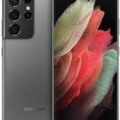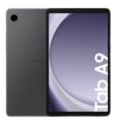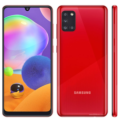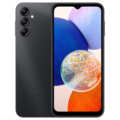- Home
- All Products
- Mobiles
- Apple iPhone 11 Price & Specs
Apple iPhone 11 Price & Specs
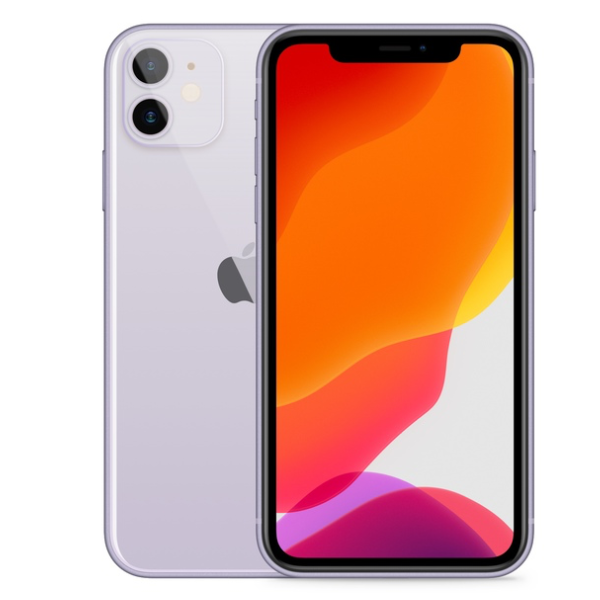

-
Processor: Apple A13 Bionic
-
RAM: 4GB
-
Storage: 64 GB, 256 GB, 512 GB
-
Display: 6.1
-
Camera: 12MP
-
Battery: IOS 13
Specs
General
| Device Type | Smart Phone |
| Model | Apple iPhone 11 |
| Announced | 20 September, 2024 |
| Released | 20 September, 2024 |
| Status | Available |
Network
| 2G Network |
SIM1: GSM 850 / 900 / 1800 / 1900 SIM2: GSM 850 / 900 / 1800 / 1900 |
| 3G Network |
HSDPA 850 / 900 / 1700(AWS) / 1900 / 2100 |
| 4G Network |
LTE band 1(2100), 2(1900), 3(1800), 4(1700/2100), 5(850), 7(2600), 8(900), 12(700), 13(700), 17(700), 18(800), 19(800), 20(800), 25(1900), 26(850), 28(700), 29(700), 30(2300), 34(2000), 38(2600), 39(1900), 40(2300), 41(2500), 66(1700/2100) |
| SIM <strong>SIM</strong> (Subscriber Identity Module) is a small card that contains mobile network subscriber's account information. This allows the phone using the card to attach to a mobile network. The SIM card is most commonly associated with GSM and UMTS mobile networks. Moving a SIM card from one phone to another allows a subscriber to switch mobile phones without having to contact their mobile network carrier. SIM cards can also be used by a phone to store limited amounts of data, such as phone numbers and text messages. | Nano SIM |
| Dual SIM | Dual Standby |
Design
| Type <strong>Design Type</strong> called form factor refers to a mobile phone's size, shape, and style as well as the layout and position of major components of phone. There are three major form factors seen in mobile phones => bar phones, folding phones and sliding phones. | Bar |
| Dimensions | 150.9 x 75.7 x 8.3 mm |
| Weight | 189 g |
| Material | Glass front (Gorilla Glass), glass back (Gorilla Glass), aluminum frame (7000 series) |
| Colors | Black, Green, Yellow, Purple, Red, White |
Display
| Display Type <strong>Display Technology => </strong> A number of display technologies and types used in mobile phones => TFT (Thin Film Transistor), IPS (In-Place Switching), OLED (Organic Light Emitting Diode), AMOLED (Active-Matrix Organic Light-Emitting Diode), Super AMOLED (an even advanced version of AMOLED), Resistive Touchscreen (Resistive touchscreens contain two layer of conductive material with a very small gap between them which acts as a resistance), Capacitive Touchsceen (Capacitive touchscreen technology consists of a layer of glass coated with a transparent conductor) | Liquid Retina IPS LCD Capacitive Touchscreen |
| Size | 6.1 Inches |
| Resolution | 828 x 1792 Pixels |
| Display Colors <strong>Display Colors</strong> is refers to the number of different shades of colors that the screen is capable of displaying => 64K colors, 256K colors and 16 million colors, Obviously 16M is highest available range of colors and better than others. | 16M colors |
| Pixel Density <strong>Pixel Density (PPI)</strong> is refers to the concentration of pixels on a particular display, measured in pixels per inch (ppi). Pixel density is calculated by dividing the diagonal pixel resolution of a display by its diagonal size, higher pixel density better display quality. | 324 PPI |
| Display Protection <strong>Display Protection => </strong> Gorilla Glass is a special alkali-aluminosilicate glass shield with exceptional damage resistance that helps protect mobile displays from scratches, drops, and bumps of everyday use, It is always better to go for a smartphone with Gorilla Glass for that added protection and peace of mind. | Scratch-resistant glass |
| Features |
625 nits, Dolby Vision, HDR10, True-tone, Wide color gamut, 120 Hz touch-sensing |
Software
| Operating System <strong>OS => </strong> Every computer system run on a base software called Operating System (OS). Operating System controls all basic operations of the computer (such as smartphone, PDAs, tablet computers and other handheld devices). The Operating System allows the user to install and run third party applications (apps), apps are used to add new functionality to the device. | IOS 13 |
| User Interface <strong>UI</strong> or user interface of a device is the look and feel of the on-screen menu system. How it works, its color scheme, how it responds to button presses, all of these things are part of the user interface. | ios UI |
Hardware
| Chipset <strong>Chipset</strong> is a group of integrated circuits designed to perform one or a more dedicated functions, often with real time computing constraints, Popular smartphones are equipped with more advanced embedded chipsets that can do many different tasks depending on their programming. | Apple A13 Bionic (7 nm+) |
| CPU <strong>CPU</strong> (Central Processing Unit) mostly known as processors, CPU processes instructions in order to carry out certain functions that make your device operate properly. Processors are often described as the brain of computers, smartphones and tablets, Smartphones and tablets rely on processors to carry out their every task, Processors are an incredibly important factor in selecting any type of computing device, including your smartphone. | Hexa-core (2x2.65 GHz Lightning + 4x1.8 GHz Thunder) |
| GPU <strong>GPU</strong> (Graphics Processing Unit) is a single-chip processor designed to rapidly manipulate and alter memory to accelerate the creation of images in a frame buffer intended for output to a display, This includes things such as lighting effects, object transformations, and 3D motion. | Apple GPU (4-core graphics) |
| RAM (Memory) <strong>RAM</strong> (Random Access Memory) is a type of computer memory that can be accessed randomly, any byte of memory can be accessed without touching the preceding bytes that allows information to be stored and accessed quickly from random locations. RAM is the most common type of memory found in computer systems, smartphones, tablets and other electronic devices. | 4 GB |
| Internal Storage <strong>Internal Storage</strong> is a data storage space (flash memory) mostly used in smartphones, tablets and other electronic devices where operating system, apps, music, photos, videos, files and other user data Is stored. | 64 GB, 256 GB, 512 GB |
| Card Slot <strong>Memory Card Slot</strong> is a special slot for inserting a memory card. Memory cards allow you to expand the phone's built-in memory, A memory card (sometimes called a flash memory card or a storage card) is a small storage medium used to store data such as text, pictures, audio, and video, for use on small, portable or remote computing devices such as mobile phones, mp3 players, digital cameras. | |
| Sensors <strong>Sensors</strong> are electronic components that detects and responds to some type of input from the physical environment. The specific input could be light, heat, motion, moisture, pressure and location, The output is generally a signal that is converted to use in computing systems, a location sensor, such as a GPS receiver is able to detect current location of your electronic device. |
Accelerometer, Face ID, Barometer, Compass, Gyro, Proximity |
Camera
| Primary <strong>Camera</strong> is able to capture photographs and usually videos, The most important characteristics of a camera are the resolution (measured in megapixels), lens focus type (fixed or automatic), higher megapixel cameras are known to capture higher quality photos, but not always a good measurement of the photos quality. | Dual Camera: 12 MP, f/1.8, 26mm (wide), 1/2.55", PDAF, OIS + 12 MP, (ultrawide) |
| Secondary | Dual 12 MP TOF 3D camera, HDR, Video (2160p@24/30/60fps, 1080p@30/60/120fps, gyro-EIS) |
| Video | 4K |
| Camera Features |
Phase detection, OIS, Geo-tagging, touch focus, face/smile detection, HDR (photo/panorama), Video (2160p@24/30/60fps, 1080p@30/60/120/240fps, HDR, stereo sound rec.) |
| Flash <strong>Flash Light => </strong> There is commonly two types of flash lights are used in camera mobile phones, LED Flash (LED flash offers lower power consumption with drive circuitry that takes up very little room, LEDs can be strobed faster than any other light source), Xenon Flash (xenon flash produces an extremely intense full-spectrum white light for a very short duration) |
Connectivity
| Wi-fi <strong>Wi-Fi</strong> is a popular wireless networking technology using radio waves to provide high-speed network connections that allows devices to communicate without cords or cables, Wi-Fi is increasingly becoming the preferred mode of internet connectivity all over the world. | Wi-Fi 802.11 a/b/g/n/ac/ad, dual-band, hotspot |
| Bluetooth <strong>Bluetooth</strong> is a wireless communications technology for exchanging data between mobile phones, headsets, computers and other network devices over short distances without wires, Bluetooth technology was primarily designed to support simple wireless networking of personal consumer devices. | v5.0 with A2DP, LE |
| GPS <strong>GPS</strong> The Global Positioning System is a satellite-based radio navigation system, GPS permits users to determine their position, velocity and the time 24 hours a day, in all weather, anywhere in the world, In order to locate your position, your device or GPS receiver must have a clear view of the sky. | Yes + A-GPS support, & GLONASS, GALILEO, QZSS |
| Wi-fi Hotspot | |
| USB | 2.0, proprietary reversible connector |
| NFC <strong>NFC</strong> (Near field communication) is a set of standards for smartphones and similar devices to establish peer-to-peer radio communications with each other by touching them together or bringing them into proximity, usually no more than a few inches. | |
| Wireless Charging <strong>Wireless Charging</strong> (Inductive Charging) uses an electromagnetic field to transfer energy between two objects. This is usually done with a charging station. Energy is sent through an inductive coupling to an electrical device, which can then use that energy to charge batteries or run the device. |
Data
| GPRS <strong>GPRS</strong> (General Packet Radio Service) is a packet oriented mobile data service on the 2G and 3G cellular communication system's global system for mobile communications (GSM), Generally, GPRS is used for the purpose of wireless data transfer, such as sharing pictures and videos or browsing the Internet via a mobile phone connection. | |
| EDGE <strong>EDGE</strong> (Enhanced Data GSM Environment) is a wireless network technology generally considered the next step in the 2G network offers data transfer rates up to four times faster than ordinary GSM networks, Generally, EDGE is used for the purpose of wireless data transfer, such as sharing pictures and videos or browsing the Internet via a mobile phone connection. | |
| Speed | GPRS, Edge, 3G HSPA, 4G LTE-A, EV-DO Rev.A 3.1 Mbps |
Messaging
| SMS <strong>SMS</strong> (Short Messaging Service) is a text messaging service component of phone, Web, or mobile communication systems. It uses standardized communications protocols to allow mobile phone devices to exchange short text messages over the networks. | Yes |
| MMS <strong>MMS</strong> (Multimedia Messaging Service) is a standard way to send messages that include multimedia content (audio clips, video clips and images) to and from mobile phones over wireless networks using the WAP protocol. | |
| Email <strong>Email</strong> (Electronic Mail) is a system for receiving, sending, and storing electronic messages, Similar to a letter, email is text messages that may contain files, images, or other attachments sent via the internet to a recipient by using applications and software prograps. An email address is required to receive email, and that address is unique to the user. | |
| IM <strong>IM</strong> (Instant Messaging) is an exchange of text messages through a software application, it enable you to create a kind of private chat room with another individual in order to communicate in real time over the Internet. | Yes |
Media
| Audio Playback | |
| Video Playback | |
| FM Radio | |
| Loudspeaker | |
| Ring Tones | MP3, WAV |
| Alert Types | Vibration, ringtones |
| Handsfree | No |
Battery
| Battery Type <strong>Battery Type => </strong> Cell phones run on various kinds of batteries depending on the manufacturer, phone size or shape and features. There are basically four types of cell phone batteries => Lithium Polymer, Lithium Ion, Nickel Metal Hydride and Nickel Cadmium. | Li-Ion (Lithium Ion) |
| Capacity <strong>Battery Capacity</strong> is a measure (typically in Amp-hr) of the charge stored by the battery, and is determined by the mass of active material contained in the battery. The battery capacity represents the maximum amount of energy that can be extracted from the battery under certain conditions. | 3110 mAh |
| Placement | Fixed |
| Talk Time <strong>Talk Time</strong> is the longest time that a single battery charge will last when you are constantly talking on the phone under perfect conditions, Ambient temperature and highly dependent on the cellular network environment such as the distance to the closest cell network tower. | up to 17 hrs |
| Music Play | up to 65 hrs |
iPhone 11 was released on September 20, 2019. It has a powerful A13 Bionic chip, a 6.1-inch Liquid Retina LCD display, a dual camera system with a 12-megapixel wide-angle lens and a 12-megapixel ultra-wide-angle lens, and other features.
A variety of colors, including Black, White, Green, Yellow, Purple, and (PRODUCT)RED, are offered for the device. With a glass front and back and an aerospace-grade aluminum frame, it has a modern and robust design.
Table of Contents
The iPhone 11 also has fast charging, wireless charging, water and dust resistance, Face ID for secure authentication, and other features. High-definition photos and videos, including 4K video at up to 60 frames per second, can also be taken with the device.
The iPhone 11 is an excellent smartphone overall, balancing performance and features well. It is a fantastic alternative for users who want a contemporary device with cutting-edge camera capabilities and a stylish design but don’t want to fork over the high price of Apple’s flagship models, like the iPhone XS or iPhone 11 Pro.
Design of iPhone 11
Display: The 6.1-inch Liquid Retina screen on the iPhone 11 has a resolution of 1792 x 828 pixels.
Size: The iPhone 11 weighs 194 grams and has dimensions of 150.9 by 75.7 by 8.3 mm. It has a design with tough glass and aerospace-grade aluminum that has rounded edges.
Camera
The 12-megapixel wide and 12-megapixel ultra-wide cameras are set up in a dual-lens setup on the iPhone 11’s impressive camera system.
The f/1.8 aperture of the wide camera and optical image stabilization helps to lessen blur brought on by camera shake. You can capture more of the scene in a single shot with the ultra-wide camera’s f/2.4 aperture and 120-degree field of view.
Smart HDR, which combines multiple images to produce a single image with improved dynamic range and detail, is one of the advanced image processing tools available with the camera system. Additionally, the camera has a Night mode that employs cutting-edge algorithms to take bright, clear pictures in dim lighting.
The iPhone 11’s 12-megapixel TrueDepth front-facing camera supports Face ID and lets you take beautiful selfies with cutting-edge Portrait mode features. With 4K video recording at up to 60 frames per second and slow-motion video recording at 120 or 240 frames per second, the camera system also has advanced video recording capabilities. Overall, the iPhone 11’s camera system is among the best on the market and makes it simple to take beautiful pictures and videos.
Performance
With the A13 Bionic chip, one of the most potent mobile processors on the market, the iPhone 11 is built for high performance. The six-core A13 Bionic chip strikes the perfect balance between speed and efficiency thanks to its two high-performance cores and four efficiency cores.
The chip also has a potent four-core GPU that can handle even the most difficult graphics-intensive tasks, like professional video editing and high-end gaming. The A13 Bionic chip also features a cutting-edge neural engine with a 1 trillion operation per second processing speed, enabling advanced machine learning and artificial intelligence capabilities.
Additionally, the iPhone 11 has 4GB of RAM, which is more than enough memory to run multiple apps at once and keep them open in the background. With storage capacities of 64GB, 128GB, and 256GB, the device offers plenty of room for your apps, pictures, videos, and documents.
The iPhone 11 performs exceptionally well overall, offering quick and effective processing, potent graphics, and cutting-edge machine-learning capabilities, making it the perfect device for multitasking, gaming, and other demanding tasks.
Storage
There are three different storage options for the iPhone 11: 64GB, 128GB, and 256 GB. How much room you have to store apps, pictures, videos, and other files on your device depends on its storage capacity.
Users who mainly use their device for everyday tasks like calling, messaging, and web browsing and don’t store a lot of files or apps on it should consider the 64GB model. However, you might find that the 64GB storage is insufficient if you use your device to store a lot of photos and videos or if you download a lot of apps.
Users who frequently store a lot of photos and videos and install a lot of apps on their devices should choose the 128GB model, which provides twice the storage space of the 64GB model.
Power users, photographers, and videographers who require a large amount of storage space for their files and content are the best candidates for the 256GB model because it offers the most storage capacity.
Because the iPhone 11’s storage capacity cannot be increased, it is crucial that you pick the storage option that best meets your needs when you buy the device.
Processor
One of the most powerful mobile processors for smartphones, the A13 Bionic chip, is found in the iPhone 11. An ideal balance of performance and efficiency is provided by the six-core A13 Bionic chip, which has two high-performance cores and four efficiency cores.
The chip features a potent four-core GPU with a 7-nanometer manufacturing process that provides outstanding graphics performance for gaming and other demanding tasks. Additionally, it has a cutting-edge neural engine that can carry out up to 1 trillion operations every second, enabling advanced machine learning and artificial intelligence capabilities.
The A13 Bionic chip outperforms most of its rivals in benchmark tests, making it one of the fastest mobile processors on the market. With snappy app launches, quick multitasking, and fluid performance even with resource-intensive apps and games, it offers a quick and fluid user experience.
The A13 Bionic chip gives the iPhone 11 overall excellent performance, making it one of the fastest and most potent smartphones on the market.
Connectivity & Networking
The iPhone 11 offers a variety of networking and connectivity options, including:
- Wi-Fi: The system can connect to routers that support Wi-Fi 6, the newest and fastest Wi-Fi standard, for quicker and more dependable connections.
- Cellular Connectivity: Fast cellular connectivity is provided by the device’s 4G LTE support, and Dual SIM with eSIM functionality lets you use two phone numbers on the same device.
- Bluetooth: The device supports Bluetooth 5.0, which enables quicker and more dependable connections with compatible devices.
- NFC: Contactless payments and other NFC-enabled features are made possible by the device’s NFC chip.
- GPS: The gadget has a built-in GPS that enables you to use location-based services and applications.
- Lightning Connector: The device charges and transfers data using the Lightning connector.
The iPhone 11 also supports a number of wireless technologies, such as AirPlay 2 and AirDrop, which let you wirelessly share files with other nearby devices and stream audio and video to compatible devices. It is simple to stay connected to the internet and other devices no matter where you are because the device is designed to be compatible with a wide range of network standards, including Wi-Fi, Bluetooth, and cellular networks.
Battery life of iPhone 11
The iPhone 11 is made to have all-day battery life, so with typical use, you can use it for up to a full day on a single charge. The apps you use, the brightness of the display, and the network conditions in which you use the device may all have an impact on the specific battery life you experience.
The iPhone 11’s estimated battery life is as follows:
- Up to 17 hours of video playback
- Up to 65 hours of audio playback
- Up to 10 hours of internet use over Wi-Fi
- Up to 9 hours of internet use over cellular
- Up to 11 hours of video playback streamed over Wi-Fi
- Up to 5 hours of video playback streamed over cellular
With an 18W power adapter, the device also has fast charging capabilities that let you charge it up to 50% in just 30 minutes (sold separately). You can use a Qi-compatible wireless charger to charge the device because it also supports wireless charging.
Overall, the iPhone 11 has a good battery life and supports fast and wireless charging, making it simple to keep your device charged and ready to use all day.
Apple iPhone 11 Pros & Cons
| Pros | Cons |
|---|---|
| Powerful A13 processor | 64GB base storage |
| Good pricing | Display is not the best |
| Fantastic battery life | Not as sleek as the Pro |
| Upgraded camera | No headphone dongle in the box |
| Excellent Night Mode | Only Pro models get the 2x telephoto |
| New colors | No expandable storage |
| Dual camera with ultra-wide-angle lens | Relatively expensive compared to some competitors |
iPhone 11 Price in Pakistan
Apple iPhone 11 price in Pakistan is probably lower, though, as it is now an older model and has been replaced by many newer iPhone models like the iPhone 11 pro and iPhone 11 pro max but the new iPhone 11 price in Pakistan is around 144,899. Check websites like iShopping, OLX, or Daraz, to find the most recent iPhone 11 prices in Pakistan. Remember that prices on these websites can vary, and you should always exercise caution when buying from individual sellers.
Apple iPhone 11 different City Prices in Pakistan
| City | Price |
|---|---|
| Price in Islamabad | Rs 144,899/- |
| Price in Lahore | Rs 144,899/- |
| Price in Karachi | Rs 144,899/- |
| Price in Faisalabad | Rs 144,899/- |
| Price in Quetta | Rs 144,899/- |
| Price in Peshawar | Rs 144,899/- |
Conclusion
iPhone 11 is a strong and versatile smartphone with top-notch performance, a beautiful design, solid construction, and a top-notch camera. Its A13 Bionic chip offers quick and fluid performance, and the battery life is intended to last all day with typical usage. The absence of a headphone jack, the lack of expandable storage, and the device’s relatively high cost, when compared to some rivals, are some of its shortcomings. For users who value performance, camera quality, and overall design and build quality in a smartphone, the iPhone 11 is a fantastic option.
FAQ
What is the Release Date of Apple iPhone 11?
The release date of the iPhone 11 is 2019, September 20.
Is iPhone 11 waterproof?
iPhone 11 is water and dust resistant, but it doesn’t mean they’re waterproof.
Is iPhone 11 dual sim?
Yes, you can use Dual sim in it but one physical sim and one e-SIM.
Does iPhone 11 have 5G?
No, it’s not compatible with 5G.
Does iPhone 11 support wireless charging?
Yes, the iPhone 11 supports wireless charging.
Disclaimer: The Apple iPhone 11 prices listed on this page are sourced from local shops and dealers and are updated daily. While we strive for accuracy, we cannot guarantee that the price information of the Apple iPhone 11 provided on this page is 100% correct, as human error is possible. We recommend that you visit your local shop for exact pricing information. Thank you for your understanding.

